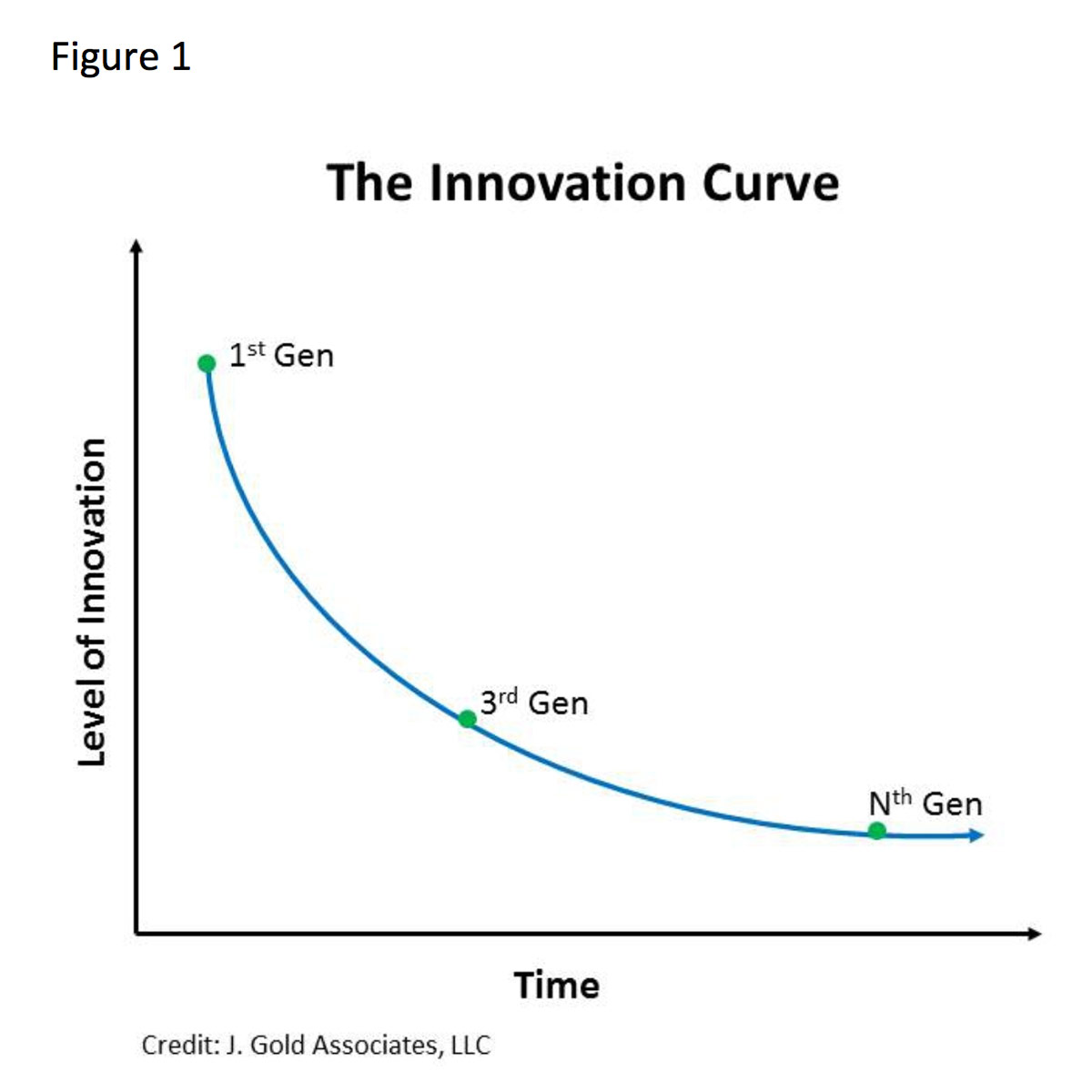Innovation at ACC | The Wheel and The Hub
The journey of becoming an innovator begins with a simple question: Is the status quo of health care acceptable? Innovators are more likely to say no.
This answer does not negate the phenomenal progress over the last several decades in understanding cardiovascular disease and providing more effective treatments. It does affirm a steadily diminishing return on “investment” in the current state of knowledge.
This well-known phenomenon called the innovation legacy trap is represented by the innovation curve (Figure 1) that shows that after an innovative product or process finds success and cultivates a lucrative consumer base, the level of innovation for the product by the company diminishes. This is the story of the iPhone as well as products and processes in health care.
This natural history of innovation illustrates the infinite need for sustained innovation. When we learn something new we don’t go from wrong to right, rather we go from wrong to slightly less wrong. The status quo is never acceptable. New knowledge in basic sciences, genetics and new technology is being generated at astonishing speed. We can only leverage this new knowledge by relying on Bayesian thinking: Given this new knowledge, how do I need to adjust my prior thinking?
This brings us to: How can I contribute to innovation in health care?
- The “wheel of innovation” begins with identifying patient unmet needs (Figure 2). These can be addressed through innovation in one of three categories:
- Health care delivery
- Technology
- Medical devices
- Digital health and wearables
- Information technology
- Virtual care and telemedicine
- Research
- Basic sciences – the known therapeutic targets in cardiovascular disease have reached a plateau. Further progress requires identification of new disease mechanisms and new therapeutic targets.
- Translational research
- Clinical research
- Mentorship. Innovation is a journey that cannot be travelled alone. After identifying the area(s) where your expertise and passion intersect, identify a mentor. The ACC Innovation Section, and its partners, is becoming a hub of mentors for future innovators where they can network and find guidance and support along their journey.
This article was authored by Issam D. Moussa, MD, MBA, FACC; Juan Grenada, MD; Chaim Lotan, MD, FACC; Maulik Majmudar, MD; and Regina S. Druz, MD, FACC, of the ACC Innovation Council.
Keywords: ACC Publications, Cardiology Magazine, Bayes Theorem, Cardiovascular Diseases
< Back to Listings


